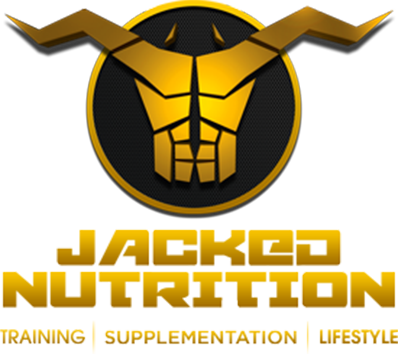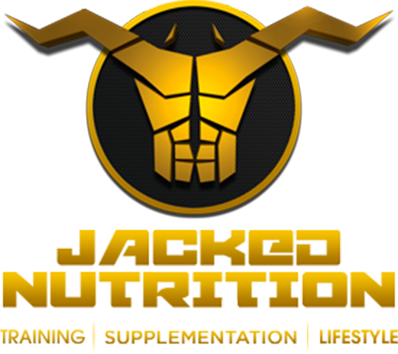The human body has more than 600 muscles. Each muscle is made up of thousands or tens of thousands of tiny muscle fibers. Each fiber is made up of several small strands known as fibrils. Each muscle fiber's ability to contract is governed by impulses from nerve cells. The number of fibers present in a muscle heavily influences its strength. The body produces adenosine triphosphate (ATP), which muscle cells use to produce mechanical energy, to power a muscle.
You can move, lift, or sit still with the aid of some muscles. Others aid with breathing, seeing, and food digestion. The muscle that pumps blood throughout your body is your heart. Muscle function may be impacted by a variety of illnesses and accidents. Eat well and exercise frequently to keep your muscles strong and keep your weight at a healthy level.
Types of Muscles
In the human body, there are three types of muscles;
Skeletal Muscles
The muscles are linked to the bones which move the skeleton. Skeletal muscles are under the supervision of the central nervous system's (CNS') peripheral division. These muscles are therefore managed conscious, or voluntary, though. Muscle fibers with many nuclei are the fundamental unit of this type of muscle. Each of these striated (transversely streaked) muscle fibers functions independently of its nearby muscle fibers.
- Striated Muscles: Skeletal muscles are striated, meaning they are made up of countless sarcomeres, or muscle units, of identical size and transverse bands. These bands give a striated muscle its striped appearance under a microscope. The entire muscle expands or relaxes when the bands in the sarcomeres contract or relax. Each muscle has several bands that interact with one another to enable strong, fluid movement.
Smooth Muscles
The autonomic nervous system regulates the smooth muscle found in the walls of hollow internal organs like blood vessels, the gastrointestinal tract, the bladder, and the uterus. Since smooth muscle cannot be consciously controlled, it behaves spontaneously. The smooth (non-striated) muscle cell is spindle-shaped and has a single nucleus in the middle. Smooth muscle contracts rhythmically and slowly.
Cardiac Muscles
The autonomic nervous system is also in charge of the cardiac muscle that lines the walls of the heart. Similar to smooth muscle, the cardiac muscle cell has a single central nucleus, but it is also striated, just like skeletal muscle. The rectangular form of the heart muscle cell. The heart muscle contracts voluntarily, forcefully, and rhythmically.
Examples of Muscles
Calf Muscle
Your lower leg's calf muscle is located behind your shin bone towards the back. Together, the muscles enable you to stand on your toes, flex your foot, run, leap, and stroll. One of the most typical muscle strain ailments among sportsmen is calf strain. Sports that call for sprinting and rapid footwork expose players to a higher risk of this kind of injury.
Hamstring Muscle
At the back of your thigh, you have skeletal muscles called hamstrings. You use hamstring muscles for many different leg actions, including walking, stair climbing, squatting, and more. The most frequent sports injury is a hamstring injury. The greatest techniques to prevent hamstring injuries are stretching, warming up, and not pushing through the leg, hip, or knee pain.
Rotator Cuff Muscle
A collection of tendons and muscles known as the rotator cuff muscle stabilizes the shoulder joint. The shoulder can securely rotate thanks to these muscles. Injuries to the rotator cuff are common. Rotator cuff muscle injuries can range from chronic inflammation to rotator cuff tendon rupture, among other things.
What is Muscle Building?
Understanding muscle-building is one of the greatest methods to get started. The secret to building muscle mass is to boost protein synthesis while reducing protein oxidation. Muscle hypertrophy is the increase in muscle cell growth and resistance training is a definite process to initiate it. The right amount of resistance training triggers your body’s hormonal reaction to growing muscle to ensure that the process leads to muscle gain. A combination of consuming enough protein and resistance exercise are the main tools for accelerating your body’s rate of protein synthesis, which is essential for muscular growth.
Healthy Tips For Muscle Building
Get Specific with Your Exercises
Building muscles through exercise can promote strength and stamina while also enhancing balance, bone health, and flexibility. There are many different sorts of physical activity that people can choose from, but there are two primary categories;
Aerobic Exercise
Sessions of aerobic exercise are frequently lengthy and just moderately demanding. The muscles must be used well below their full strength potential during this form of workout. An aerobic activity with a particularly long duration would be a marathon.
The body's aerobic system, or oxygen system, is what powers most aerobic exercises. They employ a greater percentage of slow-twitch muscle fibers. Carbohydrates, fats, and proteins are used as energy sources by the body, which also creates large amounts of oxygen and very little lactic acid.
Anaerobic Exercise
The muscles contract vigorously and more closely to their full strength during anaerobic exercise. This kind of exercise will receive greater attention from athletes who want to increase their strength, speed, and power.
A single anaerobic process can last anywhere from a few seconds to two minutes. Sprinting, weightlifting, climbing, and jumping rope are a few examples. Fast-twitch muscle fibers are used more during anaerobic exercise. The body consumes less oxygen, fat, and protein and mostly uses ATP or glucose as fuel. High levels of lactic acid are produced during this action. The body will become stronger through anaerobic training, but more fit through aerobic exercise.
Nutrition
It is essential to feed your muscles with the right nutrition. A high protein diet is part of the ideal diet plan for muscle building. When cells try to rebuild muscle fibers, which must be accompanied by a sufficient protein intake from diet, muscle hypertrophy results. You need to keep your protein balance positive if you want to gain muscle mass. High protein foods are red meat, poultry, eggs, salmon, soybeans, and dairy products.
According to the international society of Sports Nutrition (ISSN), maintaining a positive protein balance requires 0.6-0.9 g of protein per pound of body weight. While, on the other hand gaining muscle may require as much as 1.3 g of protein per pound.
Mass Gainer Protein Supplements
We all agree that size is key in bodybuilding. The goal of all bodybuilders, weightlifters, and athletes is to have a big physique. The muscle mass is something that will stand out more than anything else. After proper training and good nutrition, the next thing that will help in muscle building is our mass gainer protein supplements.
Jacked Nutrition is one of the leading supplement brands in Pakistan that provides authentic supplements to your doorsteps. Build your muscle with one of our top mass gainers. Check out our website to know more about mass gainers.
Proper Sleep and Hydration
Sleep and hydration are frequently the overlooked elements in the quest for muscle. Hormones that promote muscular growth are released at the time of sleep. So, if you do not get enough sleep, your muscles will not grow and heal properly. That is why 6-8 hours of sleep every night is essential. Also, make sure to maintain adequate hydration levels while building muscle.
How To Gain Muscle Mass Fast?
In comparison to many other life goals, muscle building is one challenging task. It takes many months or even years of weight training and adequate nutrition to build significant muscle. Although, the muscle-building rate differs in every individual. About 0.5-2 pounds of muscle growth per month is a solid benchmark for the maximum potential muscle growth when combined with proper nutrition and resistant training. Overall, to reach your muscle-building goals, eat right, train hard, and stay consistent.
Conclusion:
Building and maintaining muscles is not only about achieving a strong physique but also about ensuring overall health and functionality of the body. Muscles play a vital role in movement, posture, breathing, digestion, and even circulation through the heart. By understanding the different types of muscles and how they function, we can appreciate the importance of keeping them healthy. Regular exercise, balanced nutrition, and proper rest allow muscles to stay strong while also protecting against injuries and age-related decline.
When it comes to muscle building, the process requires patience, dedication, and the right approach. Resistance training, high protein intake, quality sleep, and hydration all work together to enhance growth and recovery. While progress may seem slow, steady efforts lead to long-lasting results. Supplements can provide additional support, but the foundation always lies in consistent training and a nutritious diet. Strong muscles not only improve appearance but also boost stamina, prevent injuries, and support a healthier lifestyle.
FAQs
What is a muscle?
A muscle is a soft tissue in the body made up of fibers that contract and relax to produce movement. Muscles help in walking, lifting, breathing, and maintaining posture. They also generate heat and support internal organs. The human body has more than 600 muscles that work together to keep it functioning.
How to gain muscle?
To gain muscle, you need a combination of resistance training, proper nutrition, and rest. Strength exercises like weight lifting stimulate muscle growth by creating small tears in muscle fibers that repair and grow stronger. Eating protein-rich foods supports recovery, while adequate sleep ensures proper hormone release. Consistency in training and diet is the key to visible muscle gain.
What are the 7 major muscles of the human body?
The seven major muscles often highlighted in anatomy are pectorals, biceps, triceps, quadriceps, hamstrings, abdominals, and gluteals. These muscles are responsible for most large body movements such as lifting, running, and bending. They are also the most targeted in exercise and strength training routines. Focusing on these groups helps in overall strength and body balance.
What is the largest muscle in the body?
The largest muscle in the human body is the gluteus maximus, located in the buttocks. It plays a major role in the movement of the hips and thighs, especially in standing, walking, climbing, and maintaining posture. This muscle is also essential for generating power in running and jumping. Strengthening it improves balance, mobility, and athletic performance.
Can I gain muscle quickly?
Muscle gain is a gradual process, but with proper training and nutrition, visible results can appear in a few weeks. Beginners may notice faster changes due to their bodies adapting quickly to strength training. Eating enough protein, lifting progressively heavier weights, and resting properly speed up results. However, lasting muscle growth requires patience and consistency rather than shortcuts.



Share:
Weight Gain Diet Plan - Weight Gain Foods & Tips
Breaking the Myths Around Supplements for Women